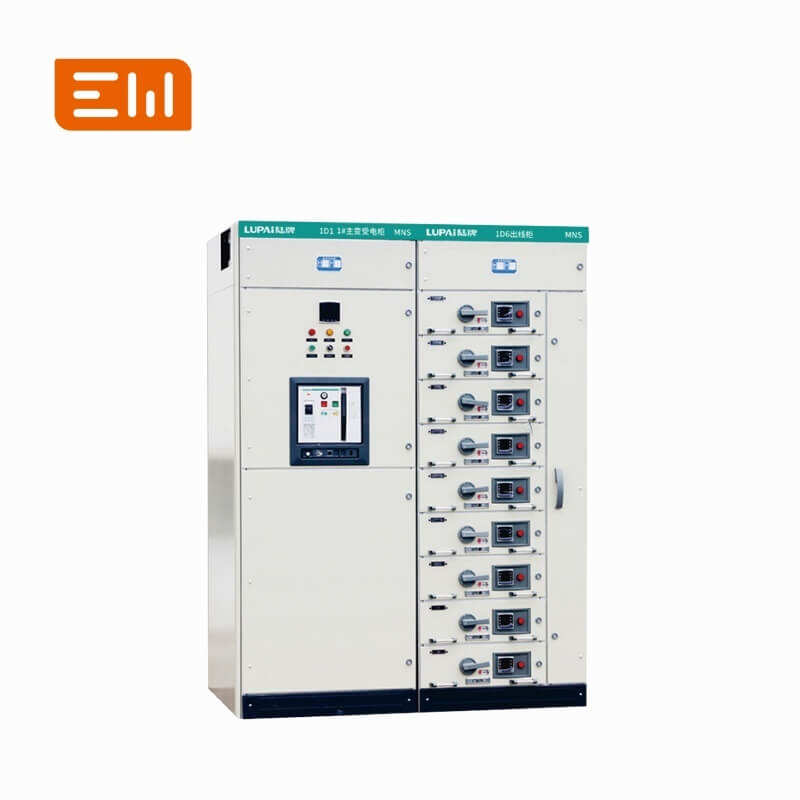Designing LV Switchboards for High-Reliability Operations
LV switchboards control the flow of low-voltage power across campuses, production halls, and transit systems. Engineers must balance safety, scalability, and digital visibility as electrical infrastructure supports more automation and electrified loads.
Quick Definition: An LV switchboard is a low-voltage assembly that houses incoming breakers, distribution feeders, and metering devices used to manage and protect circuits below 1,000 V.
Key Project Takeaways
- IEC 61439 compliance verifies LV switchboard thermal, dielectric, and short-circuit performance.
- Selective coordination and modular topology are critical for uptime in mission-critical facilities.
- Enwei Electric supplies LV switchboards engineered alongside transformers and substations.
- International standards from IEC, IEEE, and NFPA provide authoritative design guidance.
Why LV Switchboards Are Undergoing Rapid Evolution
Industrial digitization and electrified transport increase fault levels and real-time monitoring needs. Traditional switchboards lack the granularity to monitor power quality, while manual maintenance presents arc-flash exposure. Upgrading to modern LV switchboards introduces intelligent trip units, remote diagnostics, and enhanced segregation.
Regulators now expect documented selective coordination studies and arc-flash mitigation. Insurance audits frequently examine switchboard condition, making modernization a strategic priority for risk management teams.
LV Switchboard Topology Essentials
High-reliability switchboards feature double-ended configurations with tie breakers for redundancy. Horizontal busbars feed vertical risers, each protected by withdrawable feeders. Copper busbars with tin or silver plating ensure low resistance and simplified maintenance.
To support growth, engineers incorporate spare cubicles equipped with pre-installed bus connections. Thermal sensors and current transducers capture operating data, enabling load balancing and predictive analytics.
Standards and Compliance References
Design validation should reference trusted standards:
- IEC 61439-1/2 — Defines assembly verification for low-voltage switchgear and controlgear. Source: International Electrotechnical Commission
- IEC 61641 — Addresses internal arc classification for low-voltage switchgear. Source: International Electrotechnical Commission
- NFPA 70 (2023) — National Electrical Code requirements for installation and grounding. Source: National Fire Protection Association
Referencing these documents ensures switchboards pass third-party inspections and align with global best practices.
Specification Matrix
| Parameter | Recommended Specification | Resulting Advantage |
|---|---|---|
| Main Incomer | Withdrawable ACB with LSIG functions and communication ports | Improves fault discrimination and remote control. |
| Busbar Material | Copper busbars rated 1.5 kA per square inch with temperature rise tests | Maintains low losses and accommodates overloads. |
| Segregation | Form 4b partitions with arc-resistant barriers | Improves operator safety during maintenance. |
| Metering | Class 0.2S energy meters, embedded waveform logging | Delivers high-accuracy billing and power quality data. |
| Communication | Dual-network (Ethernet + RS485) with IEC 61850 or Modbus TCP/IP | Ensures integration with SCADA and digital twins. |
Digital Diagnostics and Smart Analytics
LV switchboards become smarter with embedded sensors on breakers, busbars, and ambient conditions. Data streams feed dashboards that highlight load imbalances, harmonic distortion, and breaker wear. Engineers can configure alarms for abnormal conditions such as high contact temperature or repeated trip events.
Secure cloud gateways allow remote teams to view switchboard health, reducing onsite visits. Firmware updates keep devices current with cybersecurity requirements and new protection algorithms.
Sector-Specific Applications
Pharmaceutical production: Requires redundant switchboards with high cleanliness standards and temperature monitoring to protect sensitive processes.
Transportation hubs: Demand seismic-rated enclosures and extensive metering to manage traction power, lighting, and HVAC loads.
Commercial campuses: Benefit from modular switchboards that facilitate tenant metering and integrate with energy management systems.
Renewable plants: Utilize LV switchboards to manage inverters, battery storage, and auxiliary systems, requiring robust surge protection.
Enwei Electric’s LV Switchboard Solutions
Enwei Electric designs LV switchboards with modular platforms tailored for high-reliability installations. Explore the portfolio at https://www.enweielectric.com/products/switchgear. Assemblies are type-tested and support integration with Enwei Electric transformers at https://www.enweielectric.com/products/transformers.
When projects demand turnkey substations, Enwei Electric combines LV switchboards with medium-voltage switchgear and power transformers inside prefabricated units available at https://www.enweielectric.com/products/substations.
Maintenance Planning for LV Switchboards
Maintenance programs should include breaker timing tests, insulation resistance checks, and verification of protective settings. Visual inspections for discoloration or loose hardware prevent failures. Cleaning dust and verifying ventilation fans maintain safe operating temperatures.
Digital logs from Enwei Electric’s monitoring devices provide trend data for predictive maintenance. Alerts help plan outages around production schedules, reducing impact on operations.
Engineer Checklist
- Confirm short-circuit studies and selective coordination diagrams.
- Specify arc-flash mitigation features such as remote racking or arc-resistant construction.
- Detail communication protocols and cybersecurity requirements for integration.
- Plan cable routing, top or bottom entry, and termination hardware.
- Arrange acceptance testing, FAT witness, and commissioning documentation.
Engineering FAQ on LV Switchboards
What is the difference between LV switchboards and MCCs?
LV switchboards distribute power to multiple feeders and equipment, while motor control centers specifically manage motor starters and drives.
How does selective coordination improve uptime?
By grading protective devices, only the breaker closest to a fault trips, keeping upstream equipment energized and minimizing disruption.
What support does Enwei Electric provide?
Enwei Electric offers design assistance, factory acceptance testing, onsite commissioning, and digital monitoring tools for LV switchboards.
Call to Action: Partner with Enwei Electric for LV Switchboards
Advanced LV switchboards secure power distribution for today’s intelligent facilities. Work with Enwei Electric to specify modular, standards-compliant assemblies backed by expert support. Contact Enwei Electric now to begin your LV switchboard project.
Project Applications
See real-world deployment examples and gallery highlights across Enwei Electric product hubs:
- Transformer solutions for distribution and industrial projects.
- Switchgear portfolios covering medium- and low-voltage control rooms.
- Current transformer ranges supporting precision metering and protection.
- Prefabricated substations that integrate transformers, switchgear, and panels.
Table of Contents
- Designing LV Switchboards for High-Reliability Operations
- Key Project Takeaways
- Why LV Switchboards Are Undergoing Rapid Evolution
- LV Switchboard Topology Essentials
- Standards and Compliance References
- Specification Matrix
- Digital Diagnostics and Smart Analytics
- Sector-Specific Applications
- Enwei Electric’s LV Switchboard Solutions
- Maintenance Planning for LV Switchboards
- Engineer Checklist
- Engineering FAQ on LV Switchboards
- Call to Action: Partner with Enwei Electric for LV Switchboards
- Project Applications


